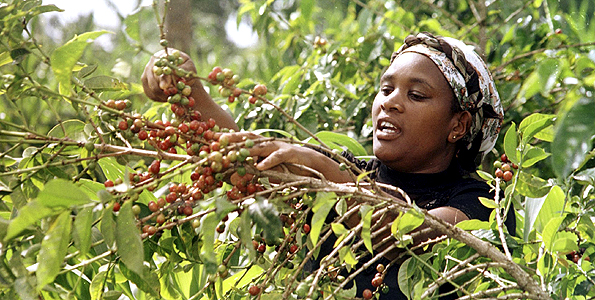Introduction of Fine Coffee Bean producing areas-- introduction of Coca Coffee producing areas in Colombia
Cauca province, Cauca department, the name comes from the Cauca River, Cauca River. Located in southwestern Colombia, it is an important producing area of Colombian boutique coffee together with Narino Department and Huila Department.

Provincial capital: Popayan Popayan
Population: about 1368000
Location: 00.58.54 N-03.19.04 E 75.47.36-77.57.07
Boundary: Valle del Cauca Department of Cauca Valley to the north
Bordered to the east by the provinces of Tolima, Uila and Kaquita (Tolima, Huila, Caqueta Department)
To the south, Narinho and Putumayo provinces (Narino, Putumayo)
The Pacific Ocean to the west
Administrative divisions: including 38 municipalities
Cauca province is a certified coffee producing area in Colombia, with an average elevation of 1758m and a maximum elevation of 2100m. The topography, precipitation, temperature and volcanic soil of the area prepare suitable conditions for the growth of coffee.
Cauca province is 80% mountainous, with parallel mountain systems in the east and middle, part of the Andes, the central mountain system includes two main volcanoes, Sotara and Petacas, and the Huila mountain, which is covered with snow all the year round, benefits from volcanic dust, and the soil in the producing area provides adequate nutrition for coffee growth.
There is the Popayan Plateau (Popayan plateur) between the eastern and western mountains of Cauca, and the patia basin in the south, and the patia River flows from north to south into Narino province. The main producing area of Cauca is located on the north side of Patia. The producing area is surrounded by high mountains, which block the airflow and water vapor from the Pacific Ocean and trade winds from the south, thus maintaining a stable climate. Near the equator, there is plenty of sunshine. The stable climate and sufficient sunshine provide a guarantee for the stability of coffee quality.
Cauca province is similar to other southwest producing areas, the precipitation shows an obvious unimodal distribution (monomodal), and the dry season mainly occurs from August to September every year, followed by a concentrated coffee blossom season followed by the next year's concentrated coffee harvest season.
The biggest difference in climate between Cauca and other producing areas is probably the relatively large temperature difference, with a daily average temperature of 11 ℃ and a daytime average temperature of 18 ℃. The temperature difference between day and night is an important factor in quality coffee. Low night temperatures and relatively higher elevations slow down the growth of coffee, allowing coffee seeds and beans to more fully absorb the nutrients of coffee fruits, as well as better acidity and commendable special sweetness of Coca Coffee.
In accordance with the fine tradition of Colombia, Coca Coffee is picked manually and washed. In addition, in order to pursue good disease resistance and higher yield, many coffee producing areas have updated the old varieties of coffee into new varieties, Cauca is rare to Katula Caturra species, in addition to tin card typica and bourbon Bourbon ancient species.
The main taste features of Coca Coffee are reflected in its wonderful acidity and beautiful sweetness, coupled with the typical mild taste of Colombia, which makes the coffee in the area a competitive target for many buyers. High-quality Coca Coffee usually shows rich floral aroma, high acidity, pleasant sweetness, medium mellow, pure, mild and well-balanced taste.
Important Notice :
前街咖啡 FrontStreet Coffee has moved to new addredd:
FrontStreet Coffee Address: 315,Donghua East Road,GuangZhou
Tel:020 38364473
- Prev

Introduction of Fine Coffee Bean Manor-- Costa Rican essence of Elsa Coffee Manor in Costa Rica
At the COE boutique coffee competition in Costa Rica in early May 2013, two raw coffee beans from Elsa Coffee Manor won the prize. Anyone familiar with coffee knows that COE is the most famous boutique coffee competition in the world, and the honor of coffee beans means that they can be sold at international online auctions for several times or even tens of times higher than the price of ordinary raw beans. Costa Rican coffee essence
- Next

Columbia boutique coffee beans Coca Cauca Valley Hope Manor Sun treatment of geisha / roses
Ten years ago, most coffee farms in Colombia went all out to sprint production, and when the government advocated the cultivation of high-yield beans with strong disease resistance and discouraged good flavor but low yield, it was hoped that the manor would resolutely embark on the long road of fine coffee. The opportunity that the manor was expected to see at that time was Geisha (also known as a geisha). The Emerald Manor of Panama has rediscovered the rose summer in the garden.
Related
- Does Rose Summer choose Blue, Green or Red? Detailed explanation of Rose Summer Coffee plots and Classification in Panamanian Jade Manor
- What is the difference between the origin, producing area, processing plant, cooperative and manor of coffee beans?
- How fine does the espresso powder fit? how to grind the espresso?
- Sca coffee roasting degree color card coffee roasting degree 8 roasting color values what do you mean?
- The practice of lattes: how to make lattes at home
- Introduction to Indonesian Fine Coffee beans-- Java Coffee producing area of Indonesian Arabica Coffee
- How much will the flavor of light and medium roasted rose summer be expressed? What baking level is rose summer suitable for?
- Introduction to the characteristics of washing, sun-drying or wet-planing coffee commonly used in Mantenin, Indonesia
- Price characteristics of Arabica Coffee Bean Starbucks introduction to Manning Coffee Bean Taste producing area Variety Manor
- What is the authentic Yega flavor? What are the flavor characteristics of the really excellent Yejasuffi coffee beans?

